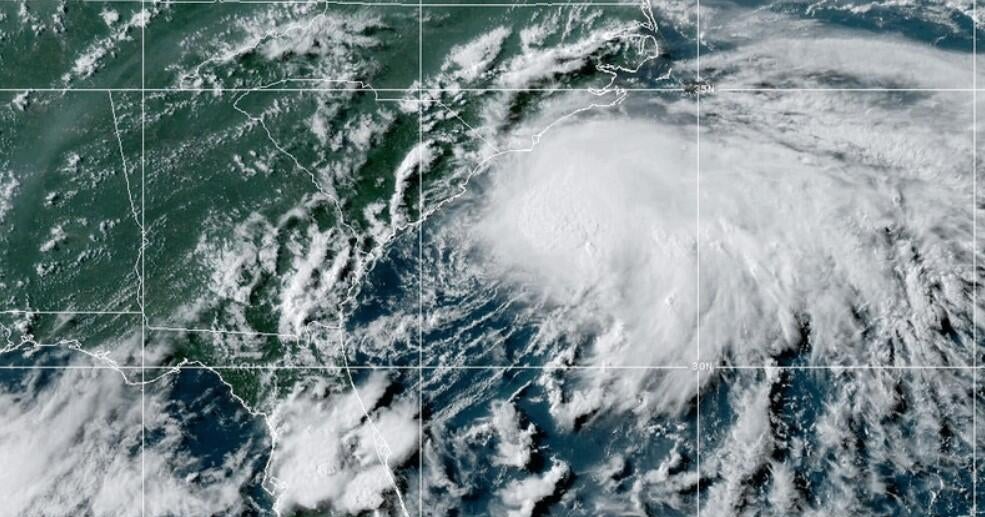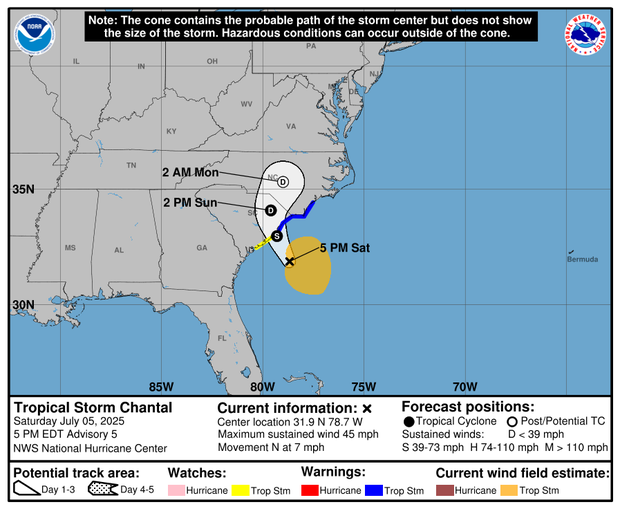Tropical Storm Chantal was forecast to make landfall in South Carolina early Sunday, bringing heavy rainfall to the Carolinas.
Chantal became a tropical storm Saturday morning about 150 miles off the coast of South Carolina, prompting tropical storm warnings for portions of the Carolinas.
The Miami-based National Hurricane Center forecasted Chantal to make landfall between Charleston, South Carolina and Cape Fear, North Carolina, early Sunday morning. Forecasters said the storm is expected to turn to the northeast by Sunday night and the center of Chantal is expected to move across the coast of South Carolina that day.
As of 5 p.m. Eastern Time, Chantal had maximum sustained winds of 45 mph and was moving north at about 7 mph. It was located about 95 miles southeast of Charleston.
Tropical storm conditions were expected to begin in the warning area Saturday evening, the hurricane center said.
NOAA
“Some slight strengthening is forecast before Chantal reaches the coast,” the hurricane center said in its latest advisory, adding that it was expected to weaken rapidly after making landfall.
The South Carolina Emergency Management Division said it expected the storm to begin impacting the state Saturday, bringing heavy rain, isolated flash flooding, gusty winds, and high rip currents through Monday.
Tropical storm warnings were issued from the South Santee River in South Carolina to Surf City, North Carolina, while a tropical storm watch was issued from Edisto Beach to the South Santee River.
Forecasters expect Chantal to produce heavy rainfall across portions of the coastal plain of the Carolinas through Monday with a total rainfall of two to four inches, with local amounts up to six inches. This could result in flash flooding.
The Atlantic hurricane season is from June 1 until Nov. 30, with peak activity typically occurring between mid-August and mid-October.
NOAA officials predicted a 60% chance of an “above-normal” Atlantic hurricane season, with between 13 to 19 named storms. Six to 10 of those are expected to strengthen into hurricanes, and three to five could become major hurricanes, forecasters said.
(Except for the headline, this story has not been edited by PostX News and is published from a syndicated feed.)


